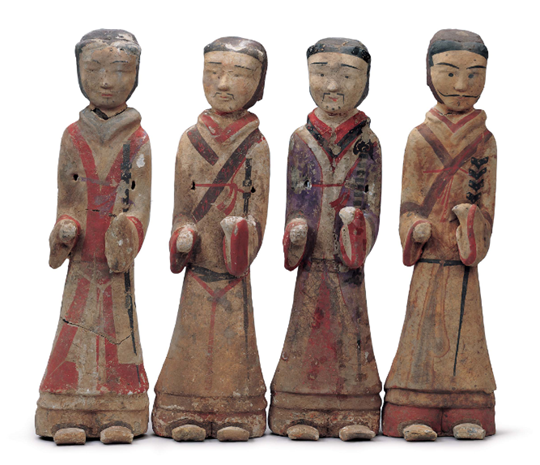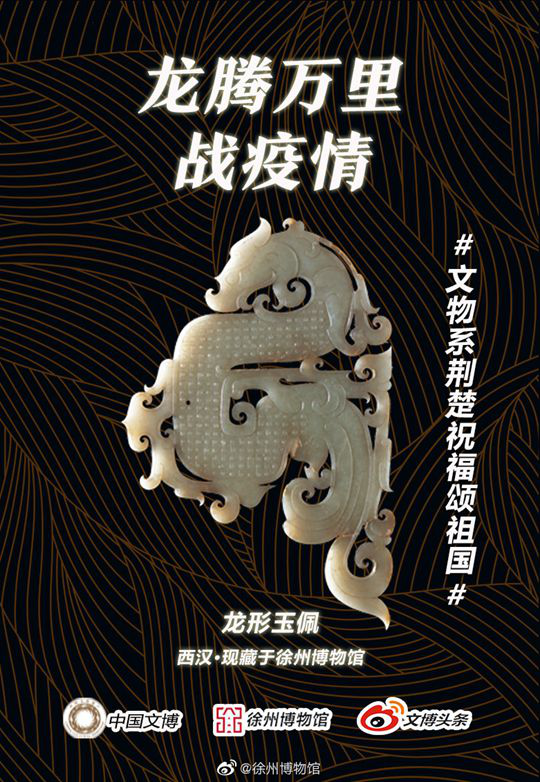

Xuzhou Han Culture Academic
Submit
【XU BO】Maximum daily capacity: 10,000 person-times Instantaneous capacity: 2,500 person-times


"The charms of elegant Han and vigorous Chu" are the unique cultural characteristics and expression of Xuzhou's urban spirits. Xuzhou, both an inheritance of Chu culture and an origin of Han culture, is featured with the inheritance of regional history and culture.
Assistance from cultural and travel circles. In the year of plague prevention, Wuhan and Hubei have received great concerns of the Chinese people. Wuhan and Xuzhou, the two ancient cities as thoroughfares nourished by Chu culture, enjoy close kinship, historical experience, and intertwined characteristics. Chu culture sets great store on marital qualities, patriotism and aggressive spirits. Chu and Han cultures, with a long history and the same origin combined with each other, encourage so many heroes in harm's way to set out from Xuzhou to Wuhan! People in cultural and travel circles in Xuzhou wish assisting Wuhan though they cannot go there. They bless and encourage Wuhan in a different way. Xuzhou Culture, Radio, Television and Tourism Bureau worked together with HIM International Music Inc. and Xuzhou Radio and Television Media Group in publishing the song of plague prevention – Waiting until Mountain Flowers Bloom. Meanwhile, it organized artistic creation institutions to publish more than 80 works, including Peking Opera video Common Efforts Lead to Victory, Bangzi Opera Thanks to You, the song One Family, and Xuzhou story telling Defeat the Epidemic to Welcome Spring. These works eulogize the heroes fighting in the front line against COVID-19, and represent the strong positive energy in the fight against epidemic. Additionally, in order to pay tribute to the medical staff fighting in the front line of plague prevention, Xuzhou Culture, Radio, Television and Tourism Bureau issued Initiatives for the Sake of Medical Staff across the Country of Enjoying Visit and Travel Free of Tickets to all A-class scenic spots in Xuzhou. All A-class scenic spots responded to the initiatives, showing appreciation of people in cultural and travel circles in Xuzhou. Xuzhou Museum actively responds to the activity "Bless the Country with Cultural Relics in Jing and Chu" launched by www.wenbo.cc. The typical museum collection "dragon-like jade pendant with articulated cloud pattern", meaning "the flying dragon fights against epidemic", is selected for blessing Wuhan and China. We wish Wuhan and Hubei a complete success with courage and determination in our marital and patriotic traditions.
The same origin. Xuzhou was within the jurisdiction of the Dapeng Kingdom in the Xia and Shang Dynasties. According to Record of the Historian – the Chu Aristocratic Family, Pang Zu, the founder of the Dapeng Kingdom, was the offspring of Emperor Zhuan Xu, and so was Chu's ancestor. That is to say, both Pang Zu and Chu were the offspring of Lu Zhong. Pang Zu, the third son of Lu Zhong, was the elder brother of Ji Lian, who was the ancestor of the Chu people. Therefore, Xuzhou and Chu have the same origin in history, especially in primitive times, when the concept of clan relatives and kinship dominated. The combination of two regions in blood lineage and geographical relationship provided strong necessity for the following inheritance of Chu and Han.
Strong ties. Chu originated in Western Zhou Dynasty and flourished in the Warring States. In the golden age of Warring States, Chu had its territory as far as southeastern Shandong on the northeastern border, and Xuzhou area was within its jurisdiction. In 284 B.C., when dukes and princes recommended Qin as their chief of alliance against Qi, Pengcheng belonged to Chu. Afterwards, under the attack of Qin from the west, the Chu Kingdom moved eastwards. In 241 B.C., Chu relocated in Shouchun (today's Shouxian, Anhui), when the center of Chu moved to the Jianghuai area with Xuzhou included. In 223 B.C., Qin wiped out Chu, so Pengcheng had been Chu's territory for more than 60 years. In the tyranny of late Qin Dynasty, "though there are only three Chu clans left, they are sure to defeat Qin." The Chu people from the Jianghuai area, led by Chen Sheng, Xiang Liang, Xiang Yu and Liu Bang, rose up in arms with the slogan "fight against Qin and recover Chu". "The Chu regime of the Zhang's" and "the western Chu regime" were established in succession. The tyrant Qin was abolished, and Liu Bang brought all the land under his control. The Han Dynasty was founded. Liu Jiao, Liu Bang's younger half-brother, was titled "King of Chu". His fief was named "Kingdom of Chu", laying a foundation on politics and culture with Pengcheng as its center.
Inheritance of culture. In Spring and Autumn Period and early Warring States, Pengcheng was Chu's territory for only sixty to seventy years, but it was profoundly influenced by Chu culture. By the end of Warring States, it had been one of the regions that represented Chu culture. The Han culture inherited Qin and Chu cultures, especially showing deep Chu culture in a large amount of archaeological records. The jade with Warring States style unearthed in Xuzhou are similar to the tomb jade in late Warring States unearthed in Changfeng, Anhui. Changfeng jade, the most fantastic among Chu jade spread eastwards, are in the final link of the evaluation of Chu jade. The S-shape dragon-like jade pendant, hollow out dragon-like jade pendant, and dragon head jade Chongya (a type of angular-shape jade ware), unearthed from the Lion Mountain King of Chu Tomb, are new types of jade derived from Changfeng jade, and they are typical of Chu culture. More than 2,000 pieces of terra-cotta figures, which were unearthed from the pit of King of Chu Tomb on the Lion Mountain in Xuzhou, represent the army of the Chu Kingdom in Western Han Dynasty. The colored drawing guard of honor, unearthed from King of Chu Tomb in North Dongshan in Xuzhou, are deeply influenced by Chu's customs in mandarin traditions and clothing style. Many of the terra-cotta figures are dressed in Chu-style sheny (ancient middle clothing). In general, it inherits, at least partially, Chu's cultural customs, extends the art of Chu's terra-cotta figures, and reproduces it at a higher level. Spiritually, Chu has simple and deep customs and oral expressions, which are easily accepted and popularized. Liu Bang and Xiang Yu, who came from Chu, spoke Chu dialects and sang Chu songs. Madam Qi, Liu Bang's beloved imperial concubine, "loves Chu dance". The series of musician and dancer figures unearthed from the King of Chu Tomb on Mount Tuolan in Xuzhou, epitomize Chu's cultural art.

